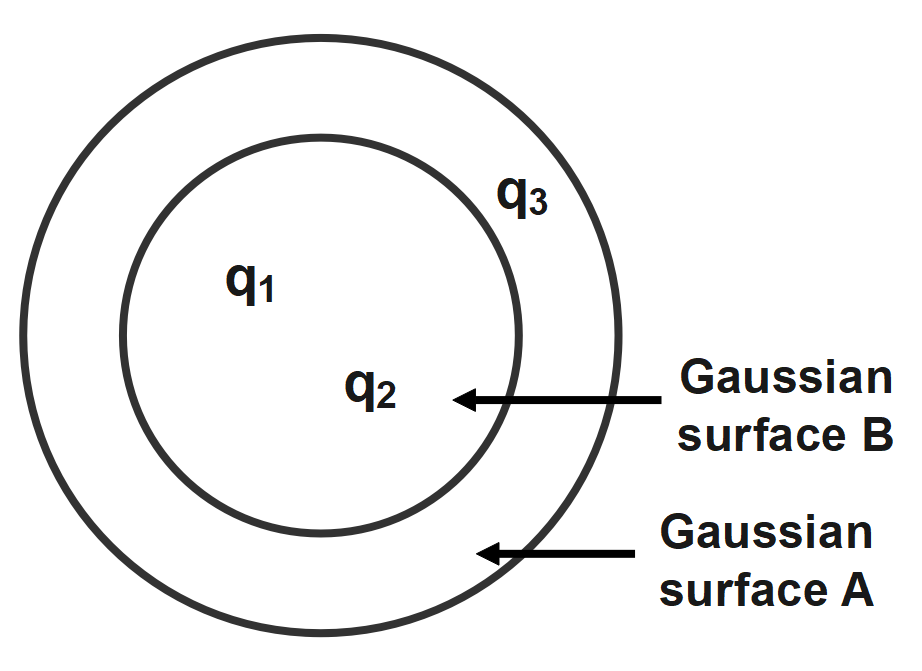
The electric flux for gaussian surface A that enclose the charged particles in free space is (given

(A)
(B)
(C)
(D)

Answer
405.3k+ views
1 likes
Hint: We know that the electric flux passing through the point P will be dependent on the Gaussian surface and the charges it encloses, consistent with Gauss’s law. Hence, only the charges
Complete step by step answer:
As we know, the electric flux due to the charges enclosed in a hypothetical Gaussian surface is always due to the charges enclosed within the surface. There is no contribution to the flux due to charge outside the Gaussian surface.
By calculating the flux by enclosing the charge in a hypothetical surface called Gaussian surface. The Gauss law states that the electric flux is due to some charges enclosed in a Gaussian surface. Thus, the total flux due to charges enclosed per permittivity of free space
Now that we have total charges enclosed per
On substitution the values in above equation we get;
On further solving and taking denominator to numerator we get;
On simplifying we get the value of electric flux:
Therefore, correct answer is option A i.e. the electric flux for gaussian surface A that enclose the charged particles in free space is
Note:
Note that Coulomb's law can be derived from Gauss’s law and vice versa. It is one of Maxwell's four equations of electromagnetic interaction. It can be used to find the electric field due to discrete and continuous charge distributions.
Complete step by step answer:
As we know, the electric flux due to the charges enclosed in a hypothetical Gaussian surface is always due to the charges enclosed within the surface. There is no contribution to the flux due to charge outside the Gaussian surface.
By calculating the flux by enclosing the charge in a hypothetical surface called Gaussian surface. The Gauss law states that the electric flux is due to some charges enclosed in a Gaussian surface. Thus, the total flux due to charges enclosed per permittivity of free space
Now that we have total charges enclosed per
On substitution the values in above equation we get;
On further solving and taking denominator to numerator we get;
On simplifying we get the value of electric flux:
Therefore, correct answer is option A i.e. the electric flux for gaussian surface A that enclose the charged particles in free space is
Note:
Note that Coulomb's law can be derived from Gauss’s law and vice versa. It is one of Maxwell's four equations of electromagnetic interaction. It can be used to find the electric field due to discrete and continuous charge distributions.
Recently Updated Pages
Master Class 9 General Knowledge: Engaging Questions & Answers for Success

Master Class 9 English: Engaging Questions & Answers for Success

Master Class 9 Science: Engaging Questions & Answers for Success

Master Class 9 Social Science: Engaging Questions & Answers for Success

Master Class 9 Maths: Engaging Questions & Answers for Success

Class 9 Question and Answer - Your Ultimate Solutions Guide

Trending doubts
Give 10 examples of unisexual and bisexual flowers

Draw a labelled sketch of the human eye class 12 physics CBSE

Differentiate between homogeneous and heterogeneous class 12 chemistry CBSE

Differentiate between insitu conservation and exsitu class 12 biology CBSE

What are the major means of transport Explain each class 12 social science CBSE

Draw a diagram of a flower and name the parts class 12 biology ICSE




